Pôle Emploi
Pôle emploi is a government agency in charge of employment in France. Our role was to use an algorithm to propose a tool that would help counsellors in their workflow to better meet the needs of job seekers and companies.
- 🕒 Duration : February - June 2019
🤹 Skills : Product thinking - Product design - Prototyping - User testing
🔧 Tools : Sketch - Principle - Maze
🤝 Team : Victor Ducrot

Overview
Pôle emploi is a public organisation whose role is to support jobseekers, in other words, it is the government agency that centralises the majority of unemployed people so as to help them find a job. On the other hand, the agency advises companies in their recruitment process to help them find good candidates.
The challenge is huge, with around 5 million unemployed people in France, Pôle Emploi aims to keep this number as low as possible by facilitating the return to work with support, advice and training.
Context
The Pôle emploi team approached our school for this project with a specific aim: to improve the workflow of Pôle emploi counsellors. Being the reference in France in the field because it is a public service, jobseekers flock to it and many companies ask for their help.
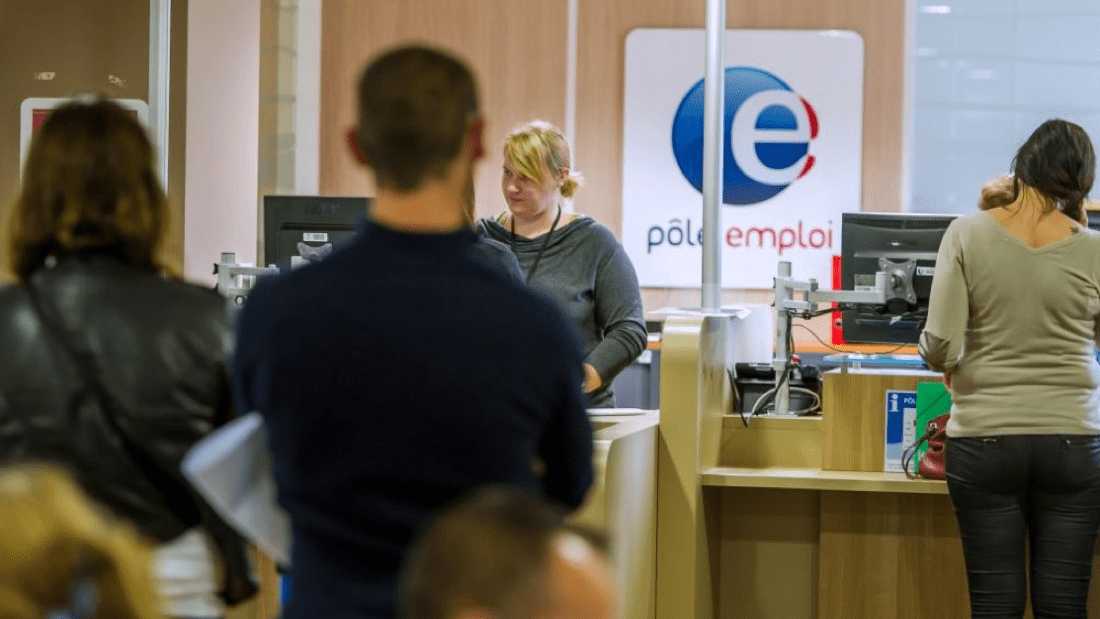
- © PHILIPPE HUGUEN / AFP
With this growing number of requests, the files are piling up and for the counsellors it is becoming more and more complicated to manage the requests of each candidate as well as the job offers from companies while respecting deadlines and constraints. Due to the large number of requests, customer follow-up is increasingly complicated to manage, so Pôle Emploi realises that their perceived value is below their real value.
The counsellors who work at Pôle emploi can be divided into 2 categories:
• Jobseekers' counsellors, who will be in contact with people looking for work, study their profiles, help them make their CVs, prepare interviews, provide them with training courses and offers to apply for jobs.
• The companies' counsellors, who are not in contact with jobseekers but only with companies looking to hire, submit profiles of jobseekers, help them to write their job offers, suggest improvements if they do not find matching profiles.
All these counsellors are working on an internal tool that allows them to access jobseekers' profiles and their files, current or past job offers, companies in the region, etc. This tool dates from 2004 and has many flaws, which is why pôle emploi is working on a new version of this tool for 2022 to improve the counsellors' workflow.
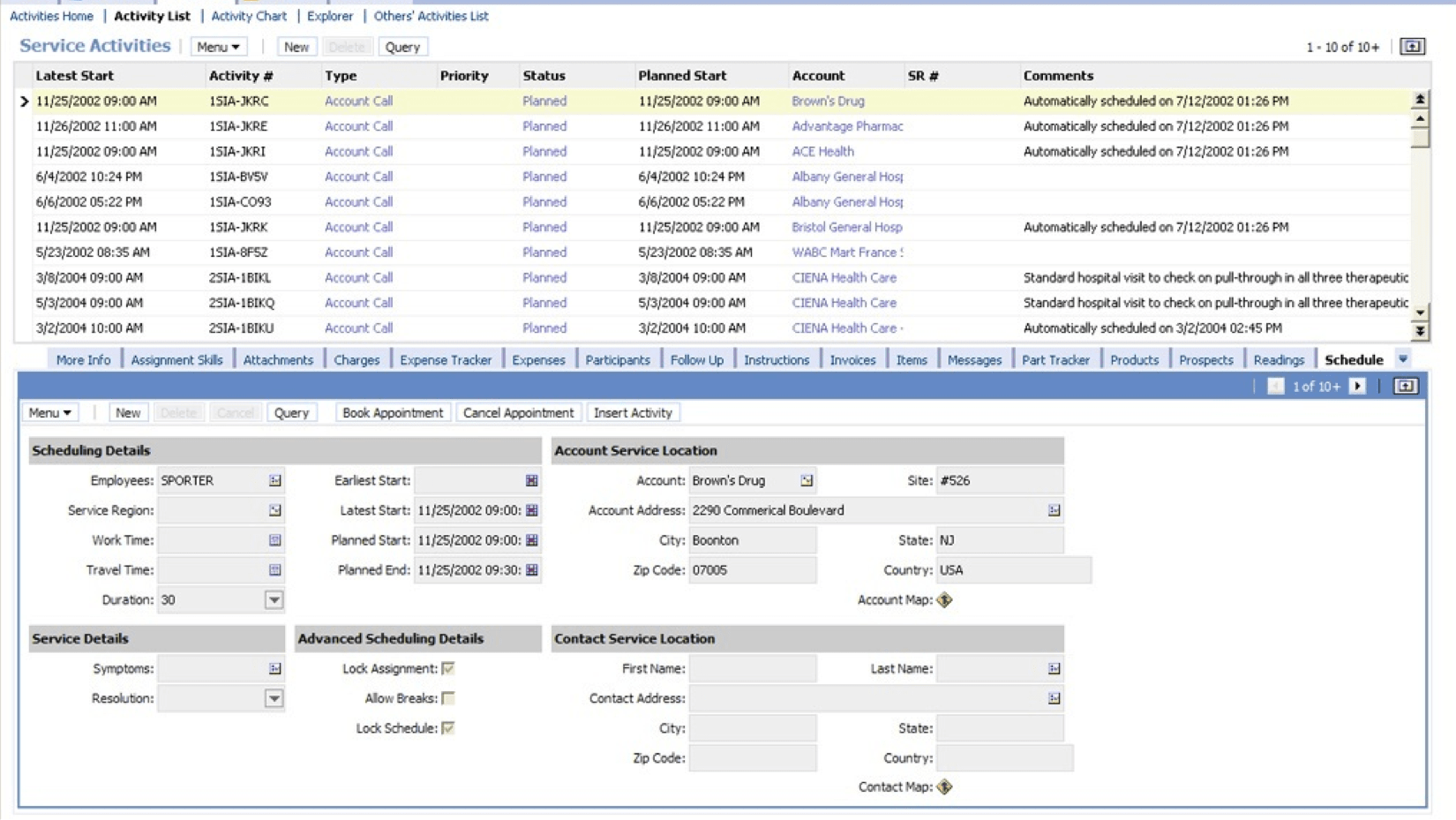
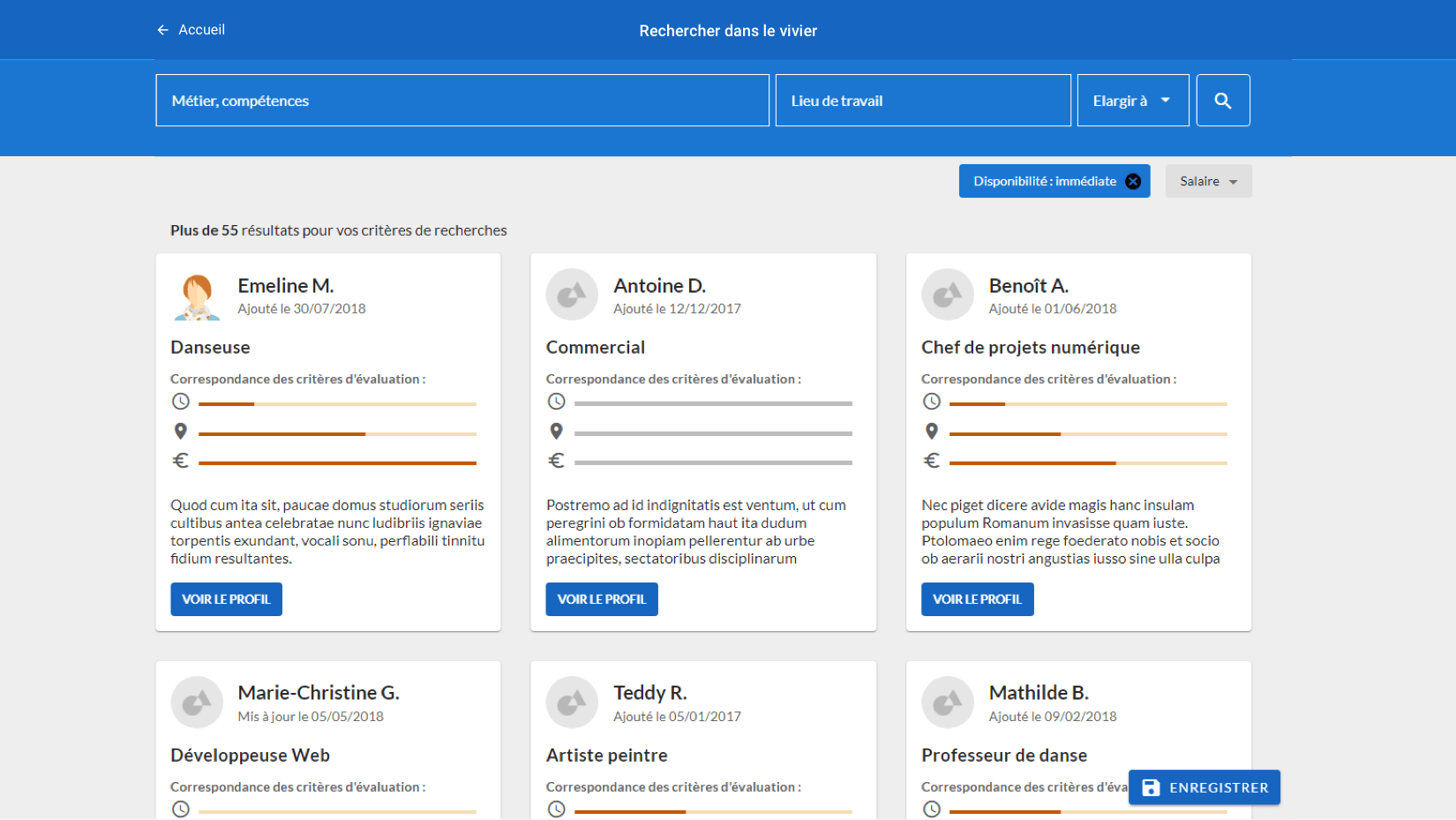
On this tool, Pôle Emploi wishes to integrate an algorithm, that can help the counsellor to be more efficient in the face of an ever-increasing number of requests. However, they don't know how they can integrate this into their new tool, nor the form this algorithm should take, nor what use it will be to them. This is what we are going to have to work on.
Research & Understanding
To better understand the context of the project, we began with a presentation of the old job centre tool and the new tool being developed to understand how it works. Then we spent a day in immersion with the counsellors to understand the problems they deal with on a daily basis and how an algorithm could respond to these problems.
In addition, the team in charge of the project showed us the path that a counsellor must follow according to the different outcomes of a file. This path is enormous and complex and has many possibilities.
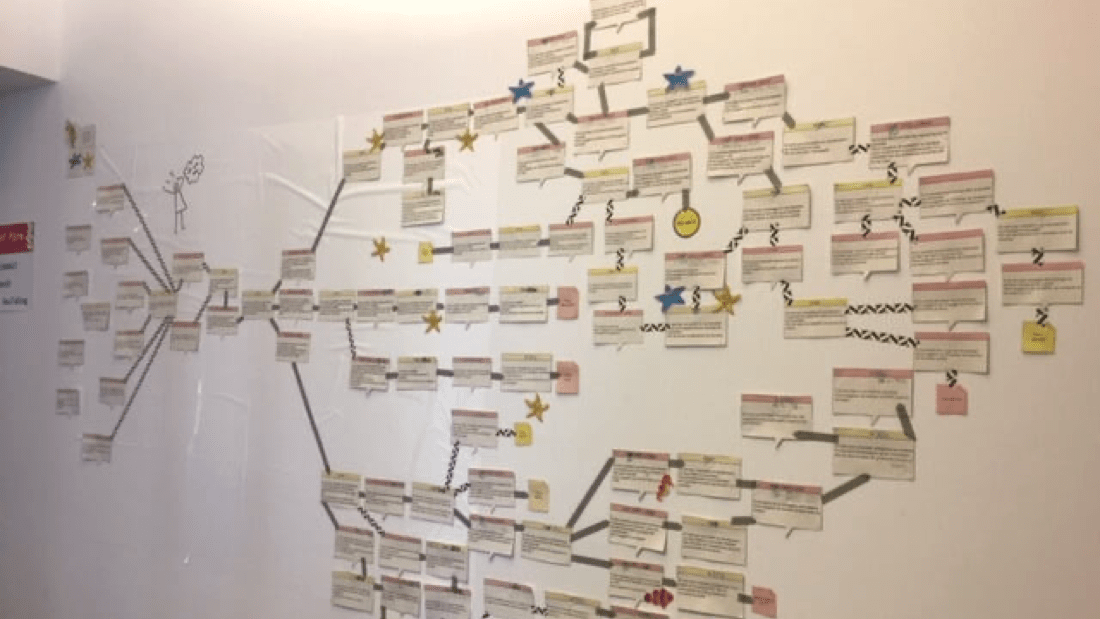

For example, if a company posts a job offer and is then offered profiles that match, then jobseekers should be informed that an offer may correspond to them by phone call. If the jobseekers respond, then an interview should be organised or if they do not respond favourably, the company should be called back to wait for new profiles or to review the offer with a salary increase, for example.
This complex architecture brings together all the possible choices according to the situations the counsellors may encounter. We believe it is a very rich tool that should be exploited.
From all this research we have learned a lot of lessons and one very important point was that counsellors should not be reticent about the algorithm solution, they do not want this tool to replace them or do the work for them. It will therefore be necessary to create a tool that accompanies them on a daily basis in their decision-making.
Challenges
• Simplify the workflow of counsellors thanks to the algorithm that will be integrated into the new platform.
• Algorithm should not replace the human side of the counsellor, but rather support him in his choices.
My Role
I work as a product designer on this group project : choosing the work axis (how to define an interesting axis, how to use AI efficiantly), the ergonomy (layout, organization, architecture), the interactions (animations, transitions and how they influence the experience, creating a prototype), Usability testing and the feature integration on the new tool using a design system.
The Solution
We have been working on the suggestion of datavisualisations on the left side of the counsellor's interface. They help the counsellor in his decision making by providing context to previously unused data. The AI adapts to the use of the counsellor and to the page on which he or she is located, being able to propose dataviz on the region, the branch of the company with which he or she is exchanging, knowing what is the average salary for the position that the jobseeker is looking for. The counsellor will be able to explain his or her choices to companies and jobseekers on the basis of precise figures.

The Process
Definition of the research axis
We started with detailed research on the subject and on the use of algorithm to find out what was possible to do. We scanned several concepts such as an intelligent chatbot, self-writing of e-mails to claimants, a suggestion of tasks that the counsellor can do or an intelligent agenda that prioritises which cases the counsellor should deal with first. We did not decide to push these ideas because we felt they were too much substituting the counsellor and his human role.
We have opted for the following axis of research:
How can the contextualisation of information support the counsellor in his choices?
Why this research axis
Indeed, Pôle emploi has a lot of important data on the regions, their companies, areas and sectors with high or low employment. There is a lot of information that is not used and that could not be put into context to help the counsellor make a choice or to help him/her understand why a company is unable to recruit in that region.
We began by listing all the steps in the process where there was an opportunity to provide information to the counsellor to enable him or her to understand something important that is not there today.
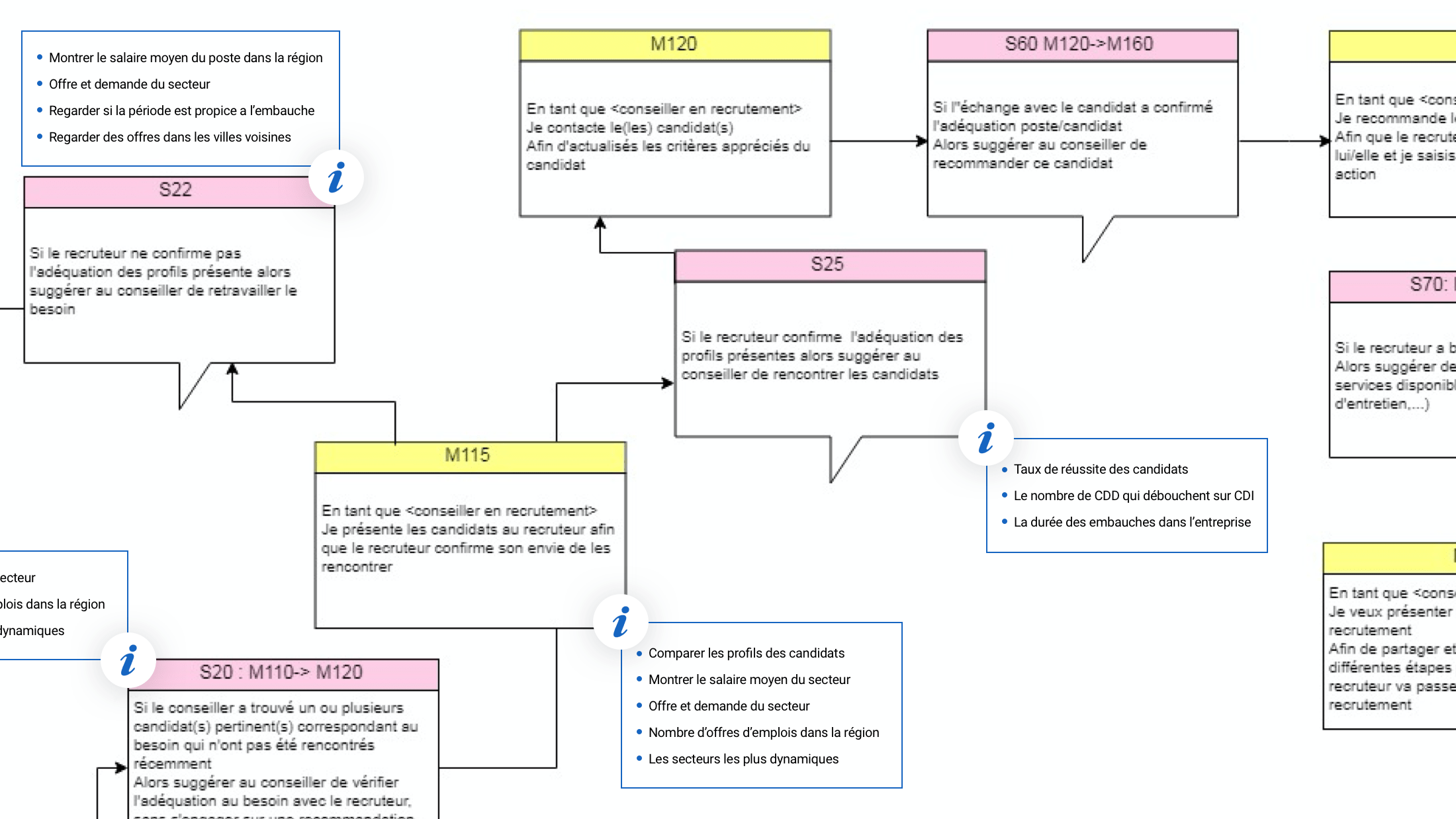
For example, when a jobseeker with a good background is looking for work in the hotel and catering industry in a region of central France, but there are no suitable offers. The counsellor has to find solutions himself, whereas we think it might be relevant to provide him with figures on the hotel and catering sector in this region, is it a sector that employs at this time of the year? What are the average salary requirements for profiles similar to this job seeker?
This will prevent the counsellor from making bad choices, choices he is not sure of or cannot explain, and additional research on the internet. He could then see that this sector is not very dynamic at this time of the year, which would explain why the jobseeker does not find a job right away despite his good CV. The counsellor could see that a neighbouring town with more tourism is hiring more and could look at offers in this region to find new solutions. Or that the person lacks a skill and that if they do a further training course in 3 months they will be able to get more job offers and a better salary.
Feature creation
After identifying several steps in the journey where contextualisation of information could help the counsellor we looked at how to format the data and where to place it on the interface so that it would be understandable.

We have studied the world of data visualisation and the different representations that can be given to figures thanks to the datavizproject website which lists a large number of existing dataviz.
Then we decided to focus on the interfaces and how to bring these dataviz to the counsellor. We created a feature with 3 levels of information:

• A "close" state where only the title of the dataviz appears but no graphical representation disturbs the reading of the rest of the interface.
• An "open" state which reveals the dataviz on the right side of the counsellor's interface for a quick reading of the information.
• A "detailed" state which is a dedicated page to this dataviz where the counsellor can change the parameters of the dataviz, the period or the geographical area and where he can know where the information comes from.
Thanks to this contextualisation of information, the companies' counsellors can give precise advice to companies on when or how to publish their offers. He or she can find out why they cannot find candidates and can advise them to adjust the proposed salary by showing the average salary that their competitors offer in this sector.

For the counsellor in front of the jobseekers he can know the periods and the sectors that hire the most in order to direct the jobseekers towards the right training. He can find out if his field of activity is hiring a lot and how long it takes for similar profiles to find work in his region, for example.
In a nutshell, the counsellor is supported by the algorithm in his daily choices on his work tool. In addition, he will be able to explain complex situations to job seekers and companies based on figures and dataviz rather than having to explain that he makes a decision solely on the basis of his intuition or personal experience.
Usability testing
We then produced a working prototype that we tested with 30 counsellors, grouping together tasks from their daily work lives to see if our feature was effective and our user experience optimal.
We asked them to do the following: "To understand why the company did not find candidates and suggest modifications. Using the datavisualisation, you need to understand why the company can't find candidates for their offer. Then you have to make changes to the offer according to this information so that new candidates can apply".
We had written an offer with a salary that was too low and a bad hiring period in the region, we wanted to see if the counsellors were going to use the dataviz to modify the offer of the company that wants to hire.
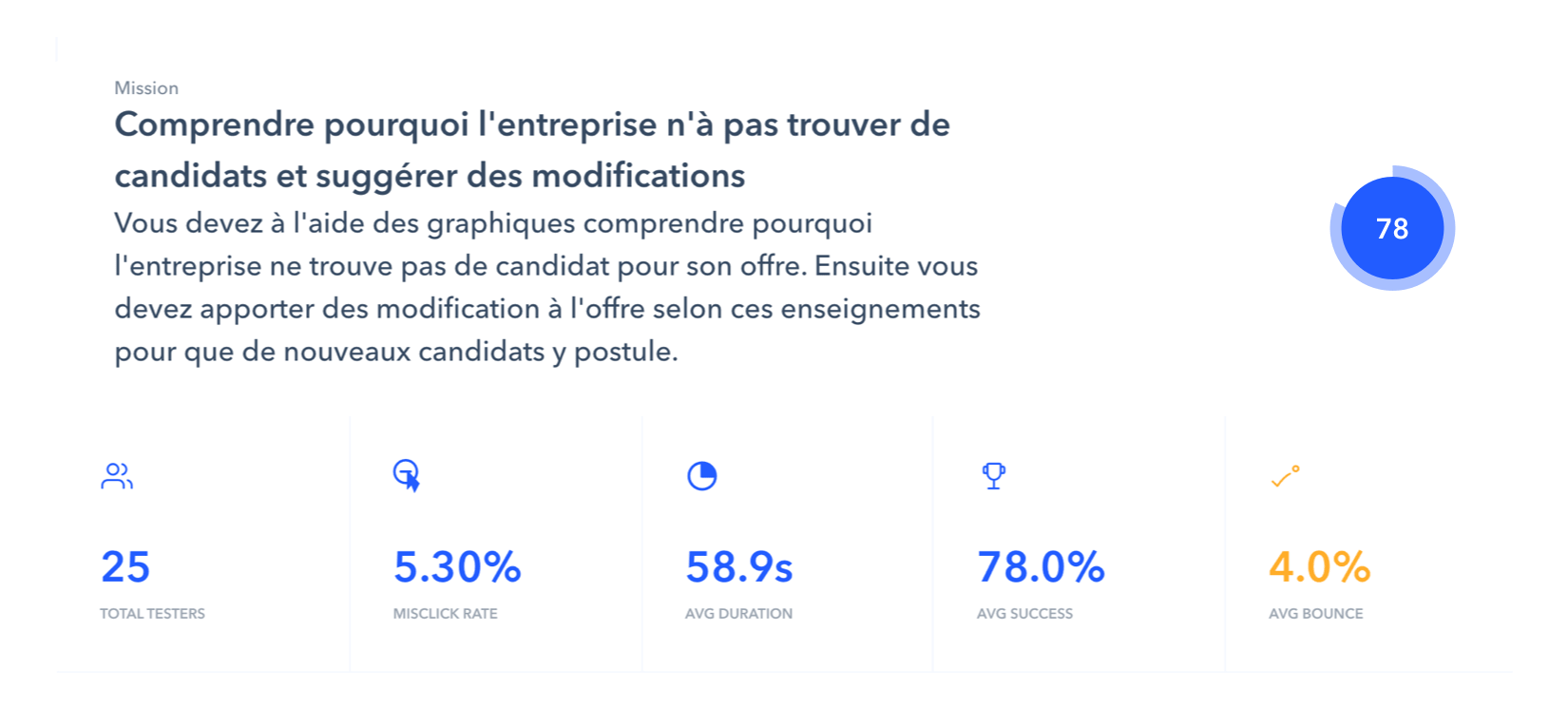
The overall result was good with 78% of the counsellors who passed the mission with the hoped-for path and only 4% who dropped out. We then asked them how they felt about the experience using 2 questions.
Did you find the dataviz useful for this task?
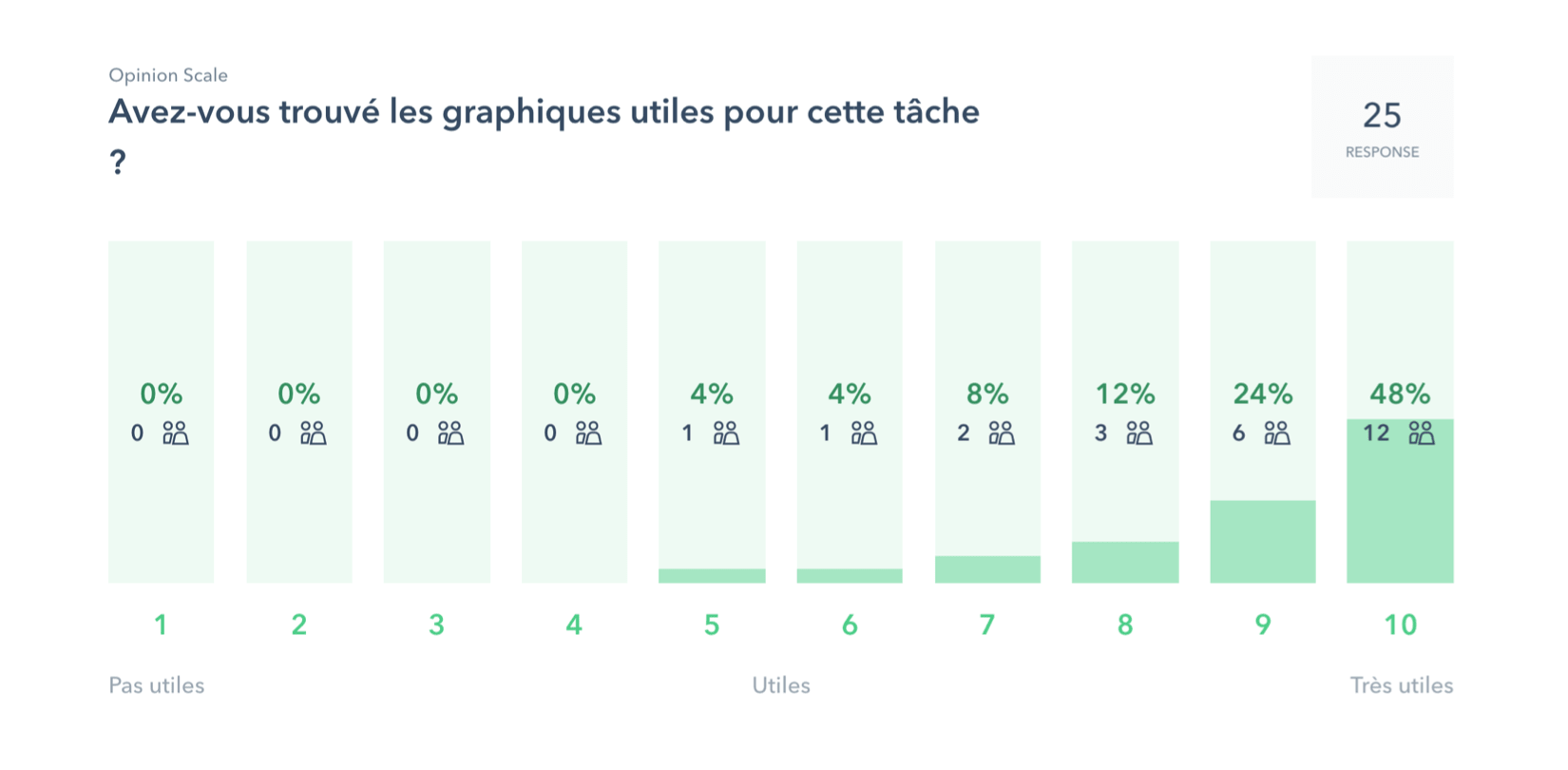
The graphics did not hinder you during the navigation, they were well placed and did not disturb the reading of the interface.
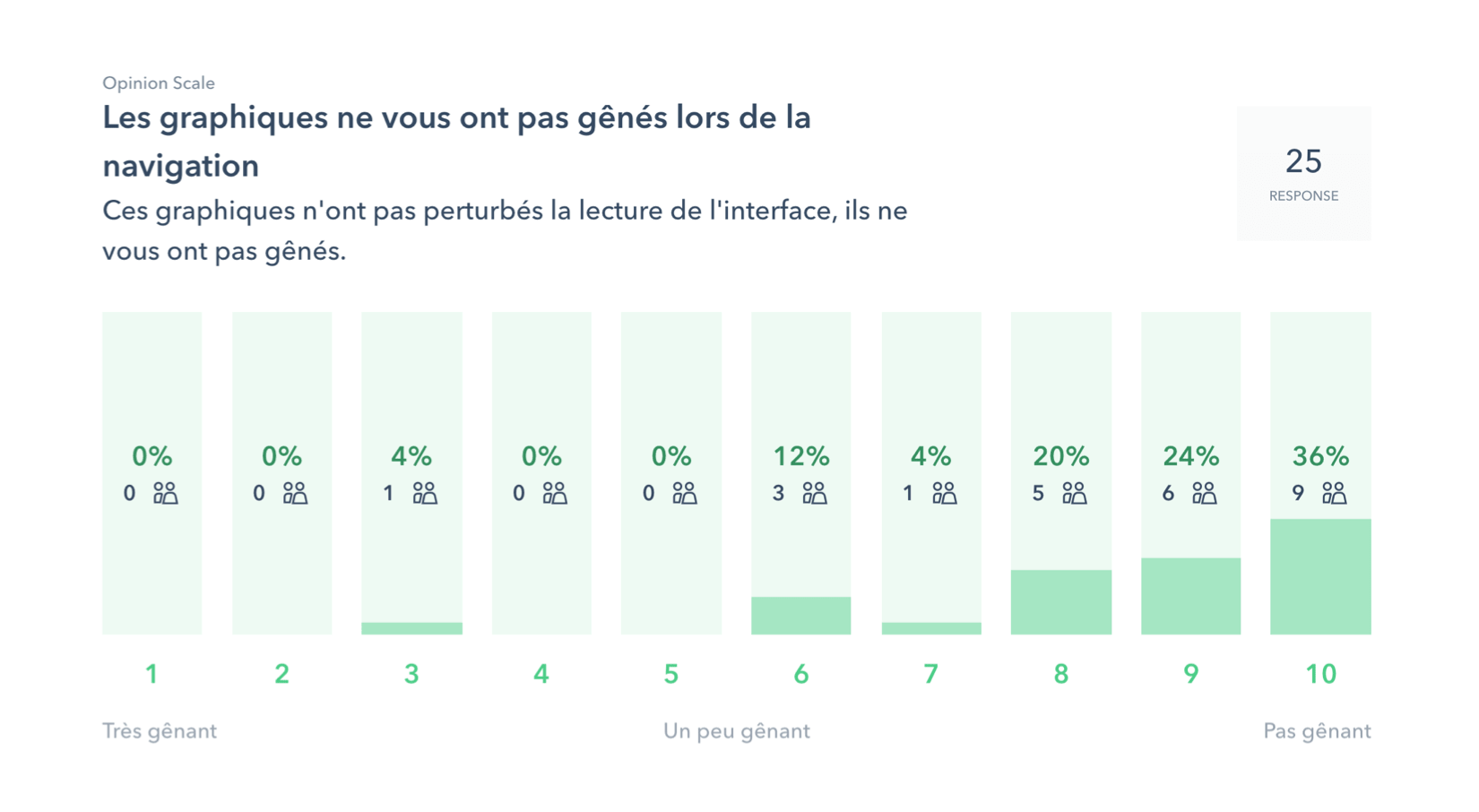
The answers collected were rather good and confirmed the usefulness of our research as well as opening up new perspectives for the evolution of our features with valuable feedback from the counsellors who use the tool on a daily basis.
Conclusion
Personally
It is a project that I found complex because the interactions between the counsellor and the platform are many. It was interesting to work with a national actor, which allowed us to understand that depending on the different regions and fields of activity, the tool had to be able to adapt to the context. Moreover, algorithm raises a question of ethics, nobody wants to be replaced by a machine, so we had to design an intelligent tool to accompany the counsellor without replacing him.
I am proud of the solution we were able to propose, which for me responds well to the demands of the employment team without forgetting the counsellors' concerns while helping them in their daily work.
Today
This project is still under development today and the new management tool should be available in 2022, with data visualisations.